I'm having quite the time understanding geom_bar() and position="dodge". I was trying to make some bar graphs illustrating two groups. Originally the data was from two separate data frames. Per this question, I put my data in long format. My example:
test <- data.frame(names=rep(c("A","B","C"), 5), values=1:15)
test2 <- data.frame(names=c("A","B","C"), values=5:7)
df <- data.frame(names=c(paste(test$names), paste(test2$names)), num=c(rep(1,
nrow(test)), rep(2, nrow(test2))), values=c(test$values, test2$values))
I use that example as it's similar to the spend vs. budget example. Spending has many rows per names factor level whereas the budget only has one (one budget amount per category).
For a stacked bar plot, this works great:
ggplot(df, aes(x=factor(names), y=values, fill=factor(num))) +
geom_bar(stat="identity")

In particular, note the y value maxes. They are the sums of the data from test with the values of test2 shown on blue on top.
Based on other questions I've read, I simply need to add position="dodge" to make it a side-by-side plot vs. a stacked one:
ggplot(df, aes(x=factor(names), y=values, fill=factor(num))) +
geom_bar(stat="identity", position="dodge")

It looks great, but note the new max y values. It seems like it's just taking the max y value from each names factor level from test for the y value. It's no longer summing them.
Per some other questions (like this one and this one, I also tried adding the group= option without success (produces the same dodged plot as above):
ggplot(df, aes(x=factor(names), y=values, fill=factor(num), group=factor(num))) +
geom_bar(stat="identity", position="dodge")
I don't understand why the stacked works great and the dodged doesn't just put them side by side instead of on top.
ETA: I found a recent question about this on the ggplot google group with the suggestion to add alpha=0.5 to see what's going on. It isn't that ggplot is taking the max value from each grouping; it's actually over-plotting bars on top of one another for each value.
It seems that when using position="dodge", ggplot expects only one y per x. I contacted Winston Chang, a ggplot developer about this to confirm as well as to inquire if this can be changed as I don't see an advantage.
It seems that stat="identity" should tell ggplot to tally the y=val passed inside aes() instead of individual counts which happens without stat="identity" and when passing no y value.
For now, the workaround seems to be (for the original df above) to aggregate so there's only one y per x:
df2 <- aggregate(df$values, by=list(df$names, df$num), FUN=sum)
p <- ggplot(df2, aes(x=Group.1, y=x, fill=factor(Group.2)))
p <- p + geom_bar(stat="identity", position="dodge")
p




